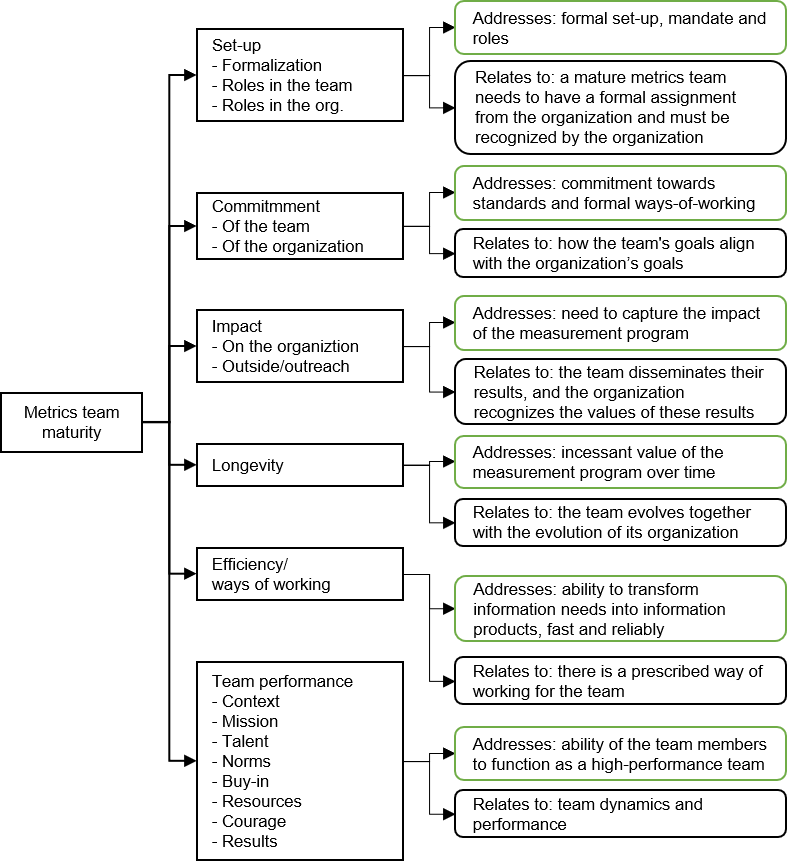
https://doi.org/10.1016/j.jss.2021.111006
Modern software development organizations work a lot with metrics – they use them to focus their development effort, to understand their products, and, recently, to guide their online experimentation.
We’ve studied software measurement programs before, mostly from the perspective of what’s in the program – what is measured, how it is measured, who is responsible for the measurement and when the measurement is conducted.
In this article, we focus on the “softer” aspects of the measurement program – how mature is a metric team, and how mature is the organization where the metric team works. When studying four different companies, aka four different teams, we could observe that the maturity of the team goes hand-in-hand with the maturity of the organization. Mature organizations can take metrics and indicators into their workflows, and therefore increase the motivation to learn in the metrics team.
We’ve also found a few key factors for success of the metric team:
- Formal, official mandate – which prevents questioning of the metric team, also important to make the team become a team, not a group of individuals
- Link to the organization – a team needs to be part of a product or service development, they need to understand what is required from them.
- Longevity – a team needs to be there for the long run, as the short term improvements will not last for very long (per definition), and therefore the motivation is not going to last.
I hope that this article, which is open access, will help others to understand how to evolve their teams and measurement programs.
